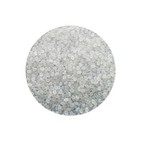Market Analysis of Polypropylene
Polypropylene (PP) is a semi-crystalline thermoplastic. It has high impact resistance, strong and tough mechanical properties, and is resistant to various organic solvents and acid and alkali corrosion. There are a wide range of applications in industry including packaging materials and labels, textiles (eg, rope, thermal underwear and carpets), stationery, plastic parts and reusable containers of various types, thermoplastic polymer equipment used in laboratories , speakers, auto parts, and polymer banknotes, is one of the common polymer materials. In 2013, the global market for polypropylene was about 55 million tons. Plastic coins in the UK, Australia and Canada are also made from polypropylene.
Market analysis
According to reports, the current global demand for PP materials is about 45 million tons per year, and it is estimated that the demand will grow to about 62 million tons by the end of 2020. The main application of polypropylene is the packaging industry, which accounts for about 30% of the total consumption. This is followed by electrical and equipment manufacturing, which consumes about 26%. Household appliances and the automotive industry consume 10% each. The construction industry consumes 5%.
PP has a relatively smooth surface and can replace certain other plastic products, such as gears made of POM and the foot pads of furniture. The smooth surface also makes it difficult for PP to bond to other surfaces, i.e. PP cannot be firmly bonded with industrial glues and must sometimes be bonded by welding. PP also has a low density relative to other plastics, which saves weight for the user. PP has excellent resistance to organic solvents such as grease at room temperature. However, PP is easily oxidized at high temperature.
One of the main advantages of PP is its excellent processability, which can be molded by injection molding or CNC machining. For example, a PP pill box, the lid is attached to the bottle body by a living hinge. The pill box can be directly processed by injection molding or CNC. The living hinge that connects the lid is a very thin piece of plastic that can be flexed repeatedly (with an extreme range of motion approaching 360 degrees) without breaking. Although the living hinge made of PP cannot bear the load, it is very suitable for the bottle cap of daily necessities.




